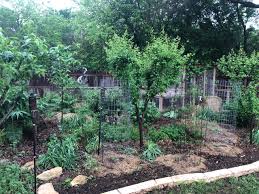Many of us dream of having a full-size orchard, but limited space often makes this a challenge. Fortunately, with some clever strategies, you can create a productive mini orchard that fits perfectly into smaller gardens or even urban spaces.
How Many Fruit Trees Do You Need for a Mini Orchard?
While there’s no strict rule for what constitutes an orchard, five fruit trees are typically the minimum number required. While this might sound like a lot for a small area, you can achieve this with careful planning and creative use of space.
What Fruits Can You Grow in Your Mini Orchard?
When most people think of orchards, apples usually come to mind, but your mini orchard can include a variety of fruits. You can grow apples, nuts, and even berrying shrubs, each bringing its own unique beauty and yield. Citrus fruits, though typically grown in groves, can also be a great addition. Dwarf citrus varieties in containers take up minimal space and produce abundant fruit if you have a suitable climate.
Many modern fruit trees are grafted onto dwarfing rootstocks that help control their size, making them easier to manage in tight spaces. Keep in mind that the variety grafted onto the rootstock influences the tree’s final size, so it’s important to choose carefully based on your available space and local conditions.

Choosing the Right Rootstocks and Growing Conditions
While dwarf rootstocks are ideal for small spaces, they may not be suitable for all conditions. For example, if your garden experiences harsh winds, waterlogging, or poor soil, it’s better to choose a hardier variety instead of the most dwarfing rootstock available. Consult with a local nursery to select the best rootstocks and varieties for your area’s climate and soil.
Training Trees to Save Space
Training your trees to grow in certain shapes can help limit their size and maximize space. Apples and pears can be trained into fan or espalier forms, making them ideal for planting against walls or fences. Choose spur-bearing apple varieties rather than tip-bearers for the best results. Other fruits, like plums, peaches, and cherries, can also be trained into fan shapes.
Another interesting option is “family” apple trees, where multiple varieties are grafted onto a single rootstock. These trees offer different flavors and ensure cross-pollination, though one variety may dominate in terms of fruit production.

Creative Mini Orchard Design
Instead of traditional wide-spacing planting, consider incorporating fruit trees into your overall garden design. Fruit trees can be planted along garden boundaries as hedges or against fences as espaliered trees. You can even create a screen or define borders with rows of cordon trees, or plant step-over cordons, which are small, knee-high trees perfect for edging pathways.
Convert an underutilized lawn area into a productive orchard by planting dwarf fruit trees. These trees not only provide fruit but also add visual appeal with their beautiful blossoms. You can also grow fruits in large containers, turning a patio or deck into a mini orchard. Keep in mind that container-grown plants require careful attention to watering, feeding, and drainage.

Ultra High-Density Planting
For gardeners with very limited space, ultra high-density planting can be a solution. Planting two to four trees in the same hole, spaced just 12-18 inches apart, can be effective, provided the trees are on similar rootstocks. Careful pruning is essential to avoid overcrowding and ensure that each tree has access to sunlight and air circulation.
Pruning Your Mini Orchard
Pruning is essential for keeping your trees compact and healthy. While most fruit trees are pruned during their winter dormancy, summer pruning is particularly effective for trees grown in small spaces. Summer pruning helps restrict growth, encourages better fruit ripening, and promotes the development of next year’s fruiting buds.
Keep in mind that restricted trees require more attention than their naturally growing counterparts. Regularly check on watering, feeding, mulching, and pruning to ensure your mini orchard remains healthy and productive.
By using these strategies, you can grow a thriving orchard even in the smallest spaces. If you have other tips or ideas for growing fruit in limited areas, feel free to share them in the comments!
